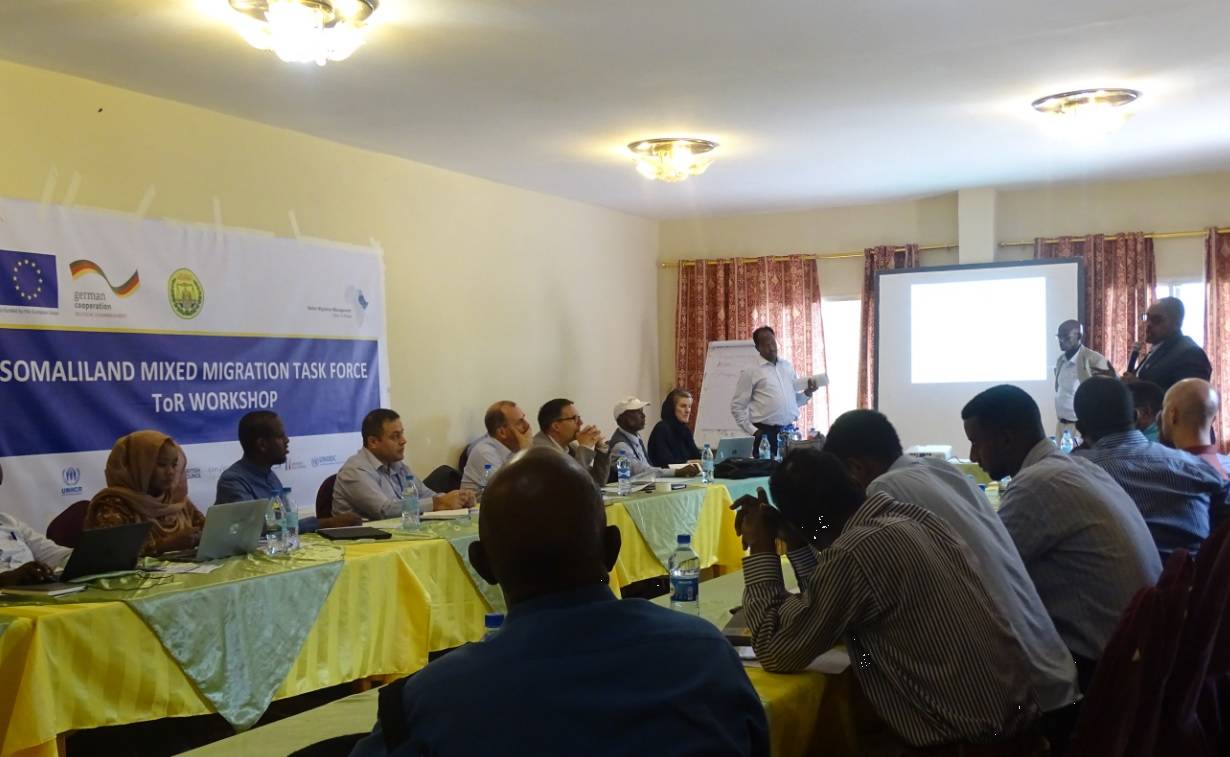| During 2019, some 220,000 people were granted international protection in the East and Horn of Africa and the Great Lakes Region (EHAGL), bringing the total number of refugees and asylum-seekers to 4.7 million. The region hosts some 67 per cent of the refugees on the African continent and 20 per cent of the global refugee population. The largest number of refugees and asylum-seekers in the region are from South Sudan, with significant numbers also from Burundi, the Democratic Republic of the Congo, Eritrea, Somalia and Sudan. Governments have generally continued to maintain open-door asylum policies and embraced the Global Compact on Refugees by adopting progressive national refugee frameworks and promoting the inclusion of refugees into national health, education and social protection systems. | |
| 19 May 2020 | |
| Internal displacement is also a phenomenon in countries in the EHAGL region and faced by several countries on a large scale. Over 8 million people are currently internally displaced. Efforts are underway to strengthen UNHCR’s role in inter-agency IDP responses in line with the 2019 IDP policy and the High Commissioner’s new Initiative on Internal Displacement which includes Ethiopia, South Sudan and Sudan. Recent opportunities to pursue solutions for IDPs in the region were bolstered by South Sudan’s accession and Ethiopia and Somalia’s ratification of the African Union Convention on the Protection and Assistance of Internally Displaced Persons in Africa (Kampala Convention). | |
| 19 May 2020 | |
| The first cases of Covid-19 in the EHAGL region were reported on 13 March and the situation continues to evolve. All 11 countries of the region have reported cases and local transmission. While there has been no large-scale outbreak amongst UNHCR’s populations of concern, the need for preparedness is urgent. UNHCR is working closely with governments, the World Health Organization (WHO) and UN Country Teams to promote the inclusion of refugees, IDPs, stateless people and others of concern in national preparedness and response measures – in particular in health, hygiene and sanitation programmes, as well as distance learning and emergency social safety nets. | |
| 19 May 2020 | |
| From January to June 2017 - 28,757 Somali refugees from Kenya were voluntarily repatriated to Somalia by UNHCR as part of its programme and benefited from an enhanced return package. | |
| 15 Sep 2017 | |
| In total, as of 28th Feb. 52,591 Somali refugees returned home since 8th December 2014, when UNHCR started supporting voluntary return of Somali refugees. | |
| 13 Mar 2017 | |
| As of 15th Feb. 49,376 Somali refugees from Kenya returned home since 8th December 2014 ( when Vol-rep started) out of which 10,062 were supported in 2017 alone | |
| 07 Mar 2017 |

By Caroline Opile in Nairobi, Kenya | 12 February 2021, 21 Feb 2021
UNHCR teams up with the African Committee on Experts on the Rights and Welfare of the Child to help eradicate childhood statelessness through an online course. Read more

National Geographic that features UNHCR, 29 Jun 2020
BURAO, SOMALILANDSo many died at once “it was like they were poisoned,” said Rahma Hassan Mahmoud, a herder in Somaliland, of the catastrophe that befell her 300 goats and sheep and 20 camels. After the last camel died, she and her family lived off milk from their neighbors, but with everyone else’s... Read more

UNHCR Website, 25 Sep 2019
UNHCR welcomes the outcome of inter-ministerial stocktaking on the Nairobi Declaration and Action Plan on Durable Solutions by the Inter-Governmental Authority on Development (IGAD) that took place in Addis Ababa, Ethiopia last week. The meeting convened humanitarian and development partners who co... Read more

UNHCR, 19 Aug 2019
Martha Kow-Donkor knows exactly how it feels to be a refugee. At the height of a major civil war in the early 90s, she fled her native Liberia for Tabou, Côte d'Ivoire. For close to eight years she lived in exile before spontaneously returning back home to Liberia in 1998. “My passion for hu... Read more

By Caroline Opile UNHCR Somalia, 14 Sep 2018
A two day workshop on mixed migration was held on 12 and 13 September in Hargeisa, Somaliland. The workshop brought together different government ministries, NGOs and international organisations in Somaliland that play a role in addressing mixed migration. The objective of the forum was to update... Read more
| CCCM COVID-19 Contingency Plan | |
| There are over 2,000 recorded IDP sites hosting 2.6 m displaced people across Somalia. People displaced to these informal sites are living in precarious conditions. The sites are overcrowded, lack dignified living conditions and enough access to basic services. An estimated 360,000 people in IDP sites are persons with various disabilities, 48 percent are women while five percent are elderly. | |
| CCCM Operations Guidance for COVID | |
| CCCM partners in Somalia play a critical role in administering site‐level coordination which feeds up to the national level. As a result, it is imperative that CCCM partners are equipped with guidance in order to continue site-‐level activities supporting displaced with the ongoing COVID-‐ 19 pandemic. | |
| Garowe Service Mapping February-March 2018 | |
| Garowe 3 Ws (site level) | |
| Mailing list subscription | |
| Mailing list subscription | |
| Refugees Self-Reliance Initiative | |
| Promoting opportunities for refugees around the world to become self-reliant and achieve a better quality of life. |